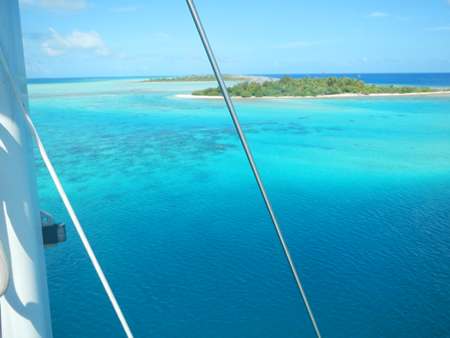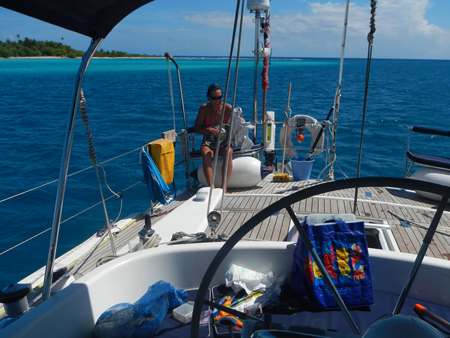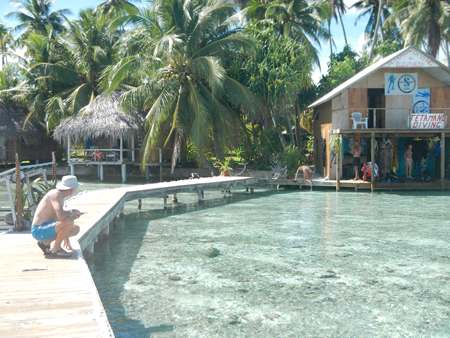The Dangerous Archipelago

Pearl of Persia
Andrew Lock
Sat 27 Apr 2013 05:12
The dangerous archipelago.....the old name for the Tuamotus. Very low,
difficult to see and so many of them that to cross through the chain meant
night sailing. Nowadays with radar and GPS it's easier but still no time
for complacency. We managed the crossing in 4 days. The winds were non
existent for the last two days and so we had to motor the last half of the
trip.
The definition of an atoll is probably in the Oxford dictionary but as I
don't have access to that I will explain it as I see it. Basically a shallow
lagoon, which could be 10 or 20 miles long, surrounded by reef, most of it
awash, with the occasional dry island, called 'motus' often no bigger than a
football field. In one or two places there may be a break in the reef which
allows you to enter the lagoon. We arrived at the south end of the Fakarava
atoll from the Marquesas at first light, which was perfect timing, as the
entrances to these atolls are tricky at the best of time, and you need
sunlight preferably behind you, as you go over the reef. With less than a
meter of water under the keel it was tense, but then through the pass and
into the lagoon. We inched our way forward and found a spot to drop the
anchor. The water was so clear that I could see the anchor at the bottom of
the sea bed, and just as I was commenting on that, 4 black tipped sharks
appeared from nowhere and started circling the boat. It was a magnificent
sight, and I just stood there gazing at these beautiful creatures. I shouted
back at Andrew who was at the wheel, to come and look at the sharks, but he
was already getting his fins and snorkel on to check on the anchor and he
jumped into the water. I immediately snapped into action and ran to check if
the life assurance policy covered being eaten by sharks. He surfaced
briefly to let me know that black tipped sharks are not at all aggressive
and that they are friendly and beautiful animals. They were inquisitive
enough to want to swim around him and check to see if he had any food,
(hopefully not to be food).
The flow of water into and out of the atoll means the sea life is rich and
varied and we took the opportunity to scuba dive in the pass a couple of
times. A family live on the pass and run a tiny 'pension', a few huts really
and have a dive centre. People can fly from Tahiti to an little air strip on
another motu and then take a two hour boat ride to get here. It was an
amazing experience as we descended down to 25 meters and drifted along in
the current. Suddenly we were in the centre of the pass and there before us
were hundreds and hundreds of sharks, black tip, white tip and reef sharks.
We just held on to a rock to avoid being washed through the pass and watched
in awe as the fish just cruised up and down and then finally we let go and
were washed through the pass at high speed, over the coral and kaleidoscope
of colours into the lagoon. We spent a couple of days there snorkelling and
swimming and then yesterday sailed to Toau, another tiny atoll, where we are
anchored. A family live ashore on the motu and live on fishing, coconuts and
not much else. They were very welcoming and last night they gave us some
fish in exchange for some a jar of peanut butter, biscuits, fruit juice and
honey. Food and any other commodity is very expensive in these places as
everything is shipped in from Tahiti on a supply boat that visits every 2
weeks. They seem to love any contact with people who are willing to talk
and show interest in their way of life. This afternoon Andrew went up the
mast again to do some checks. He's either getting heavier for me to winch
him up, or I'm getting weaker.
Photos show Andrew looking at the small sharks by the dive centre, a view of
our anchorage from the top of the mast and from the deck.



